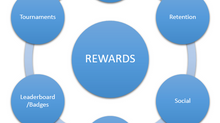Indie Game Developers and How They Market to the World
- Vishwajeet Kale
- Mar 25, 2016
- 3 min read
Introduction
Marketing was completely ignored by Indie Game Developers back in the days. Today, most of the developers realize the importance and make some effort but do very little to differentiate themselves from the mainstream. Game development became so accessible that everyone started creating games. With so many games being released every day, the app stores were flooded with games. Gaining recognition suddenly became very difficult, regardless of the quality of the game. For all their hard work, most developers failed to market their games and this trend continues even today. (DellaFave, 2014). Indie developers have multiple marketing strategies based on their marketing budget, few indie studios are backed up by investors and majority are not. In the article, the authors cover some common practices such as the game itself, communication/promotion, price and distribution
The Game Itself
The game itself, covers aspects such as the core quality of the game. The authors also highlight points such as demand for the genre, comparison to the best games in that particular genre, and what do other games from that genre do. These are some points to consider which developers may want to take into consideration while deciding over their marketing strategies. Developers may also want to consider what makes their game ‘different’ from the other games in the same genre. A great way to stand out from the pack are stunning aesthetics and visuals. Theme, background story, game setting, unique gameplay mechanics and in-game characters heavily contribute towards marketing aspects of the game. The authors also tap upon aspects such as ‘Name of the Game’ and ‘Game Updates’ as a major part of the marketing strategy. Having a catchy name and easy to pronounce will help users remember the name and potentially gives them a reason to relate to the name. Giving the audience the news of having updating the game with new content on regular intervals will keep them interested and grind on the game.
Communication/Promotion
In this section the authors talk about how well implemented is the overall communication/promotion strategy in order to market the game. Websites, gameplay videos, screenshots, press, press kits, having a blog, newsletters, social media, sales promotions, events and festivals and advertising are suggested mediums for promoting an indie game.
The Price
The authors mention a comparison in pricing with other games in the same genre, similar quality and for the intended platform cost. IF the game follows a F2P model, then pricing of IAPs should be attractive and give the user maximum ROI and not feel cheated for the money they have invested in the game. IF the game follows a Freemium mode, the in-game content should be appropriate and right for them.
Distribution
In this section, the authors talk about how well is the game distributed, whether the game easy to buy or are there any obstacles and distribution on app stores which customers are well acquainted with. Release dates are one of the most crucial aspects of distribution, the authors mention how developers must take circumstances such as clashing release dates with games of the same genre and platform into consideration. Developers must also target major conventions such as E3, gamescom, indiecade, casual connect, etc. as a part of their distribution and promotion strategies in order to create awareness of their game. (PixelProspector, 2015).
References
DellaFave (2014) Marketing Your Indie Game: The Single Most Important Thing That No One Knows How to Do. (n.d.) Retrieved July 2, 2014 from http://gamedevelopment.tutsplus.com/articles/marketing-your-indie-game-the-single- most-important-thing-that-no-one-knows-how-to-do–gamedev-7157
PixelProspector. The Marketing Guide for Game Developers. (n.d.) Retrieved from http://www.pixelprospector.com/the-marketing-guide-for-game-developers/












Commentaires